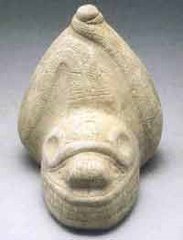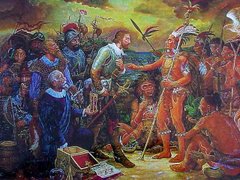
Did You Know - Chicho spring in Bayahibe, Dominican Republic is one of four individual caverns that makes up the "Padre Nuestro" complex, which is a series of water-containing sinkholes in limestone of the Pleistocene origin. The entrance of Chicho spring is a steep slop that descends 25m to a freshwater pool in an underground chamber. The chamber is 30m wide and 20m high and has some sunlight in the mouth of the cave during the day. The underwater pool itself is 8m wide by 20m long and has depths of 8m. The spring has no measurable flow and little runoff resulting in little sedimentation. It has crystal clear water that stays a constant 25 C year round. Currently the complex is used by a local resort for its water source, but this site was also used long ago by the local Taino people for gathering fresh water. Archaeologist used scuba equipment to help them with excavations in Chicho spring. They collected artifacts on several reconnaissance dives, producing an assemblage of 30 ceramic pieces. All of the ceramics are bottle forms and the assemblage included one intact vessel. Taino water bottles in the southeastern region of Dominican Republic are typically heart-shaped with zoomorphic or anthropomorphic heads attached on both sides. This bottle form is locally known as potiza and 28 of the ceramics followed this form. The artifact seen above is relatively simple, but the more elaborate potizas in museum collections show that the two lobes actually represent female breasts and is termed mammiform. The two non-potiza ceramics recovered were pieces of bottles with different forms, one with a double-bulbous form and one with a modeled, figurine-like body. - - UCTP Taino News © 2007










